Politics
Dick Cheney, powerful former US VP who pushed for Iraq war, dies at 84
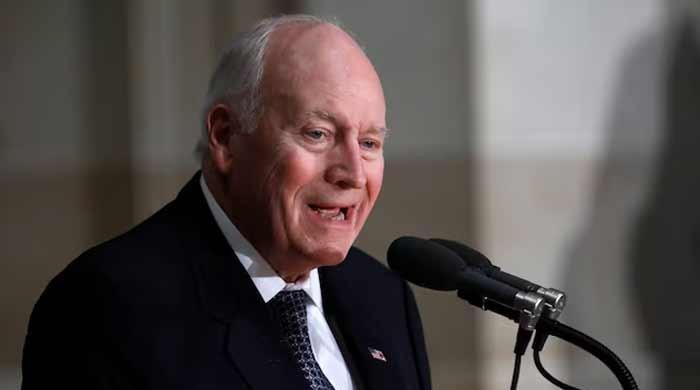

Dick Cheney, a driving force behind the US invasion of Iraq in 2003, who was considered by presidential historians as one of the most powerful vice presidents in US history, passed away at age 84, his family said on Tuesday.
In a statement, his family said that Cheney died on Monday from complications of pneumonia and cardiac and vascular disease.
The Republican — a former Wyoming congressman and secretary of defense — was already a major Washington player when then-Texas governor George W Bush chose him to be his running mate in the 2000 presidential race that Bush went on to win.
As vice president from 2001 to 2009, Cheney fought vigorously for an expansion of the power of the presidency, having felt that it had been eroding since the Watergate scandal that drove his one-time boss Richard Nixon from office.
He also expanded the clout of the vice president’s office by putting together a national security team that often served as a power center of its own within the administration.
Cheney was a strong advocate for the 2003 invasion of Iraq and was among the most outspoken of Bush administration officials warning of the danger from Iraq’s alleged stockpile of weapons of mass destruction. No such weapons were found.
He clashed with several top Bush aides, including Secretaries of State Colin Powell and Condoleezza Rice, and defended “enhanced” interrogation techniques of terrorism suspects that included waterboarding and sleep deprivation.
Others, including the US Senate Select Committee on Intelligence and the UN special rapporteur on counter terrorism and human rights, called these techniques “torture.”
His daughter Liz Cheney also became an influential Republican lawmaker, serving in the House of Representatives but losing her seat after opposing Republican President Donald Trump and voting to impeach him in the wake of the January 6, 2021 attack on the Capitol by his supporters. Her father, who agreed with her, said that he would vote for Democratic candidate Kamala Harris in 2024.
“In our nation’s 248 year-history, there has never been an individual who is a greater threat to our republic than Donald Trump,” said the man who had long been a foe of the left.
Cheney was troubled much of his life by heart problems, suffering the first of a number of heart attacks at age 37. He had a heart transplant in 2012.
Taking on Iraq
Cheney and Defense Secretary Donald Rumsfeld, who had been colleagues in the Nixon White House, were key voices pushing for the March 2003 invasion of Iraq.
In the run-up to the war, Cheney suggested there might be links between Iraq and al Qaeda and the September 11, 2001 attacks on the United States. A commission on the 9/11 attacks later discredited this theory.
Cheney predicted US forces would be “greeted as liberators” in Iraq and that the troop deployment — which would last around a decade — would “go relatively quickly … weeks rather than months.”
Although no weapons of mass destruction were found, Cheney in later years insisted that the invasion was the right decision based on the intelligence at the time and the removal of Iraqi President Saddam Hussein from power.
More than a decade earlier, as defense secretary under President George HW Bush, Cheney had directed the US military operation to expel an Iraqi occupation army from Kuwait in the first Gulf War.
He urged Bush senior to take an uncompromising line against Iraq after Saddam Hussein sent his troops to occupy Kuwait in August 1990. But at that point Cheney did not support an invasion of Iraq, saying the United States would have to act alone and that the situation would become a quagmire.
Because of Cheney’s long ties to the Bush family and experience in government, George W Bush chose him to head his vice presidential search in 2000. Bush then decided the man doing the search was the best candidate for the job.
Upon his re-entry into politics, Cheney received a $35 million retirement package from oil services firm Halliburton, which he had run from 1995 to 2000. Halliburton became a leading government contractor during the Iraq war. Cheney’s oil industry links were a subject of frequent criticism by opponents of the war.
First Republican in generations
Richard Bruce Cheney was born in Lincoln, Nebraska, to Marjorie Lorraine (née Dickey) and Richard Herbert Cheney on January 30, 1941, the day then-President Franklin Roosevelt turned 59. His mother was a waitress turned softball player, his father a federal worker with the Soil Conservation Service.
Both sides of the family were staunch New Deal Democrats, he wrote in his 2011 book “In My Time: A Personal and Political Memoir.”
Convinced that the president would want to know that he shared a birthday with the newborn, Cheney’s grandfather urged Marjorie and Richard to share the news by telegram with the White House.
In his family he “was the first Republican probably since my great-grandfather who fought in the Civil War on the Union side,” he told the PBS documentary “Dick Cheney: A Heartbeat Away.”
He moved as a boy to Wyoming with his family, before attending Yale University. “I was a mediocre student, at best,” he said. He dropped out.
Politics
US govt shutdown ties record for longest in history
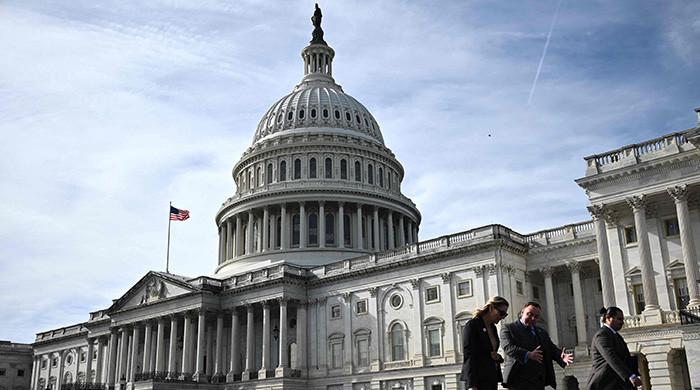

The US government shutdown entered its 35th day on Tuesday, matching a record set during President Donald Trump’s first term, as lawmakers voiced optimism over progress behind the scenes to end the dispute.
The federal closure appears almost certain to become the longest in history, with no major breakthroughs expected before it goes into its sixth week at midnight — although there were fragile signs in Congress that an off-ramp is closer than ever.
Senate Majority Leader John Thune set the buoyant mood music on Monday when he told reporters he felt “optimistic” that newly energised talks between warring Republicans and Democrats could end in a deal before next week.
The government has been grinding to a halt since Congress failed to approve funding past September 30, and pain has been mounting as programmes — including food aid relied on by millions of Americans — hang in limbo.
“I’ll be honest with you, I don’t think any of us expected that it would drag on this long. We didn’t believe, we couldn’t have imagined,” House Speaker Mike Johnson told a news conference arranged to mark the six-week milestone.
“It’s now tied for the longest shutdown in US history. And we didn’t think we’d have to come in here every single day — day after day after day — and repeat the obvious facts to the American people and to put on display every day what is happening here.”
Some 1.4 million federal workers — from air traffic controllers to park wardens — have been placed on enforced leave without pay or made to work for nothing, while vital welfare programs and even paychecks for active-duty troops are under threat.
Some lawmakers — including Thune and Johnson — are hoping a slew of elections taking place in New York, Virginia, New Jersey and California on Tuesday will provide the momentum they need to reopen the government.
But both sides remain dug in over the main sticking point — health care spending.
Democrats say they will only provide votes to end the funding lapse after a deal has been struck to extend expiring insurance subsidies that make health care affordable for millions of Americans.
But Republicans insist they will only address health care once Democrats have voted to switch the lights back on in Washington.
While both sides’ leadership have shown little appetite for compromise, there have been signs of life on the back benches, with a handful of moderate Democrats working to find an escape hatch.
A separate bipartisan group of four centrist House members unveiled a compromise framework Monday for lowering health insurance costs.
Democrats believe that millions of Americans seeing skyrocketing premiums as they enroll onto health insurance programs for next year will pressure Republicans into seeking compromise.
But Trump has held firm on refusing to negotiate, telling CBS News in an interview broadcast Sunday that he would “not be extorted.”
The president has sought to apply his own pressure to force Democrats to cave, by threatening mass layoffs of federal workers and using the shutdown to target progressive priorities.
Last week his administration threatened to cut off a vital aid program that helps 42 million Americans pay for groceries for the first time in its more than 60-year history, before the move was blocked by two courts.
But Trump nevertheless insisted Tuesday — in apparent defiance of the court orders — that the food aid would be disbursed only after the government shutdown ends.
Trump announced on his Truth Social platform that benefits from the SNAP program “will be given only when the Radical Left Democrats open up government, which they can easily do, and not before!”
Trump also revived his call for the elimination of the Senate filibuster — the 60-vote threshold for passing most legislation — so Republicans can pass government funding without the help of Democrats.
Politics
‘On brink of making history’, says Mamdani after voting in New York mayoral race
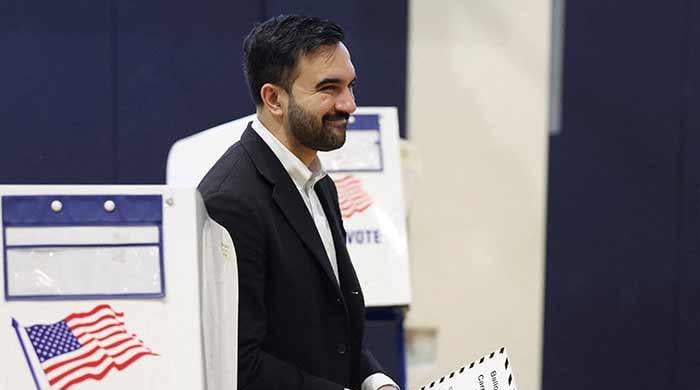
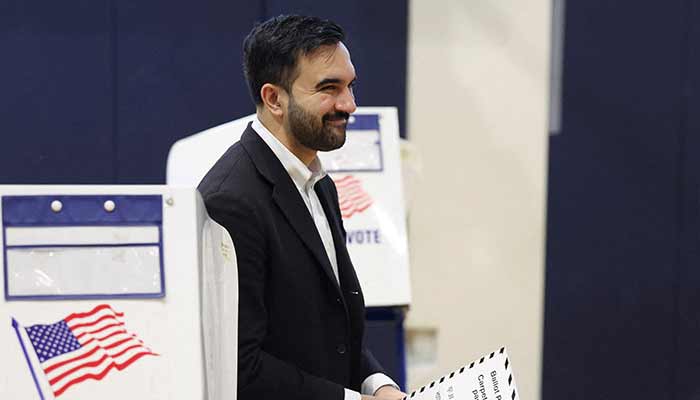
- New Yorkers on verge of saying goodbye to politics of past: Mamdani.
- Democratic nominee on about 44% in latest polls, ahead of others.
- “Will utilise every single tool to fight for people of New York.”
Democratic nominee Zohran Mamdani on Tuesday said New York City was “on the brink of making history” as he cast his vote in the city’s mayoral election, expressing confidence that his progressive campaign was poised to deliver a break from what he described as “the politics of the past.”
Speaking to reporters outside a high school polling station in Astoria, Queens, the 34-year-old democratic socialist appeared optimistic about his chances.
“We are on the brink of making history in our city, on the brink of saying goodbye to a politics of the past,” he said. “I believe that victory is a mandate in and of itself.”
Polls were opened at 6am (1100 GMT) and will close at 9pm, while early voting, which wrapped up Sunday, saw more than 735,000 people cast ballots according to election officials, the highest ever number.
Mamdani was at about 44% in latest polls, several points ahead of former state governor Andrew Cuomo, who is running as an independent.
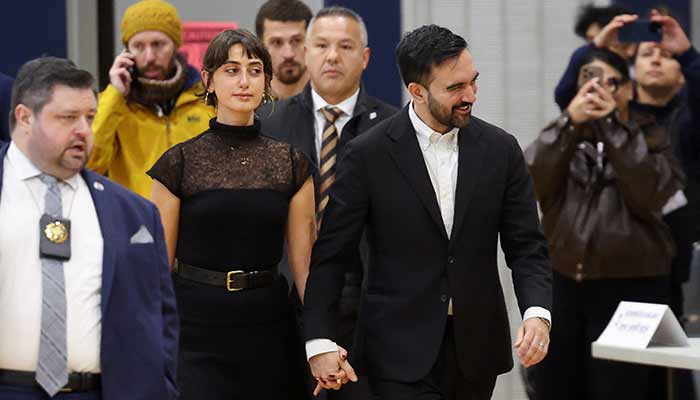
The democratic nominee, aged just 34, is a self-described socialist who was virtually unknown before his upset victory to secure the Democratic nomination.
He has focused on reducing living costs for ordinary New Yorkers, building support through his informal personal style and social-media-friendly clips of him walking the streets chatting with voters.
Mamdani, a State Assembly member, is facing Cuomo, 67, who is running as an independent after losing to Mamdani in the primary. Republican nominee Curtis Sliwa, 71, is trailing far behind in most opinion polls, which have consistently shown Mamdani with a comfortable lead.
However, the contest has taken on national political overtones in recent days. Unabashedly playing the race card, President Trump on Tuesday smeared Mamdani, who would be New York’s first Muslim mayor, as a “Jew hater.”
“Any Jewish person that votes for Zohran Mamdani, a proven and self-professed JEW HATER, is a stupid person!!!” the Republican president posted on his social media platform.
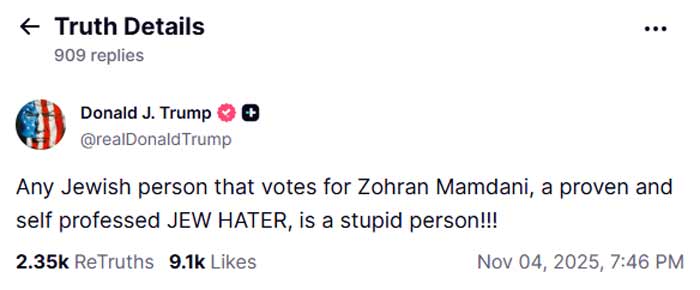
Trump had also warned of blocking federal funds to the city if Mamdani became mayor.
Responding to Trump’s remarks, Mamdani said he would “not be intimidated.” “What we see in the language of Donald Trump is a premise as if it is his decision on whether or not to fund this city — the very money this city is owed,” he said.
“I look forward to utilising every single tool at my disposal as the next mayor to fight for the people of this city. I will not be intimidated by this president, or anyone.”
He downplayed some polls suggesting he may not have the support of the majority of New Yorkers, saying, “I believe that victory is a mandate in and of itself.”
‘A mayor for all New Yorkers’
“I voted for Mamdani,” said 36-year-old Gregory Jones told Reuters.
“As somebody who’s been living in New York City for over 10 years — affordability, safety, making New York feel like home for so many people who’ve been living here for decades, for all New Yorkers, for working families, for business people, for immigrants, for underrepresented people.
“It’s really important that we have a mayor that represents all types of New Yorkers and makes New York a place where everyone can thrive and work and live happily, healthily and safely,” he added.

Lucy Cordero, a 68-year-old from Mott Haven Bronx, says she voted for Mamdani “because he’s new and he’s fresh”.
“Maybe he can make a change and fix what’s messed up now,” she told Al Jazeera.
Denise Gibbs, 46, a doctor of physiotherapy, voted at a school in Brooklyn.
“I sure hope it improves the city. I want to see it decrease divisiveness and increase livelihoods of working-class households and services for children,” she said, wearing green scrubs.
Politics
Afghans dig through rubble after earthquake kills at least 27


- Quake leaves almost 1,000 injured, destroys several buildings.
- Poor infrastructure causes “immense” difficulties in rescue: official.
- China offers aid after UN pledged assistance for Afghanistan.
Residents of northern Afghanistan were sifting through rubble and treating their injured on Tuesday after a powerful 6.3-magnitude earthquake left at least 27 dead and destroyed hundreds of houses.
The quake struck near the northern Afghan city of Mazar-i-Sharif early on Monday, injuring almost 1,000 and damaging the city’s historic Blue Mosque, authorities said. The sparsely populated epicentre meant the death toll was lower than initially feared.
Hundreds of houses were either completely or partially destroyed, according to the Afghanistan National Disaster Management Authority (ANDMA). Aid groups said the figure was concerning just ahead of the Afghan winter, when temperatures drop below freezing.
Relief workers facing ‘immense’ difficulties
The difficulties for relief workers due to poor road conditions and other infrastructure issues are “immense”, said Hosam Faysal, Head of Delegation for Afghanistan at the International Federation of Red Cross and Red Crescent Societies.
“Winter is already completely contributing to the complexity of the situation,” Faysal told journalists in Geneva via video link from Kabul.
Several health facilities have been damaged in the quake, adding to the challenges, Christian Lindmeier, a spokesperson for the World Health Organisation, told the briefing.
Some 956 people have been injured, according to Afghanistan’s Ministry of Public Health.
Buildings at risk of collapse
On Tuesday, residents in Tangi Tashqurgan, an area close to the quake epicentre, were digging out rubble and reinforcing affected buildings.
Mohammad Yasin, a local shopkeeper, said dozens of structures had been damaged or destroyed in the quake.
“If you go inside the shops, you feel afraid they might collapse any moment,” he said.
The disaster is the latest challenge for Afghanistan’s Taliban administration, already grappling with crises including an earthquake in August that killed thousands in the east of the country, a sharp drop in foreign aid and mass deportations of Afghan refugees by neighbouring countries.
The United Nations has pledged assistance along with India, which is seeking to thaw ties with a Taliban government in Afghanistan that is still under sanctions from many Western nations. China said on Tuesday it would also offer aid.
Earthquakes kill hundreds every year in Afghanistan
Hemmed in by rugged mountains, Afghanistan is prone to a range of natural disasters, but its earthquakes are the most deadly, killing about 560 people on average each year and causing annual damage estimated at $80 million.
Rudimentary building techniques contribute to the casualty figures, with experts recommending new structures be built in an earthquake-resistant way and existing buildings be retrofitted to reduce the chances of collapse.
A relatively higher standard of building, comparatively flatter terrain and a lower population meant Monday’s death toll was considerably lower than that of the August quake, said ANDMA spokesperson Yousuf Hammad.
-

 Tech1 week ago
Tech1 week agoOpenAI says a million ChatGPT users talk about suicide
-

 Tech7 days ago
Tech7 days agoHow digital technologies can support a circular economy
-

 Tech7 days ago
Tech7 days agoUS Ralph Lauren partners with Microsoft for AI shopping experience
-
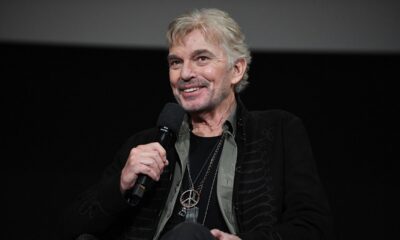
 Sports7 days ago
Sports7 days agoBilly Bob Thornton dishes on Cowboys owner Jerry Jones’ acting prowess after ‘Landman’ cameo
-

 Tech7 days ago
Tech7 days agoAI chatbots are becoming everyday tools for mundane tasks, use data shows
-

 Tech1 week ago
Tech1 week agoHere’s How Many People May Use ChatGPT During a Mental Health Crisis Each Week
-

 Fashion1 week ago
Fashion1 week agoITMF elects new board at 2025 Yogyakarta conference
-

 Fashion1 week ago
Fashion1 week agoJapan’s textile trade shows strong apparel demand, weak yarn imports






